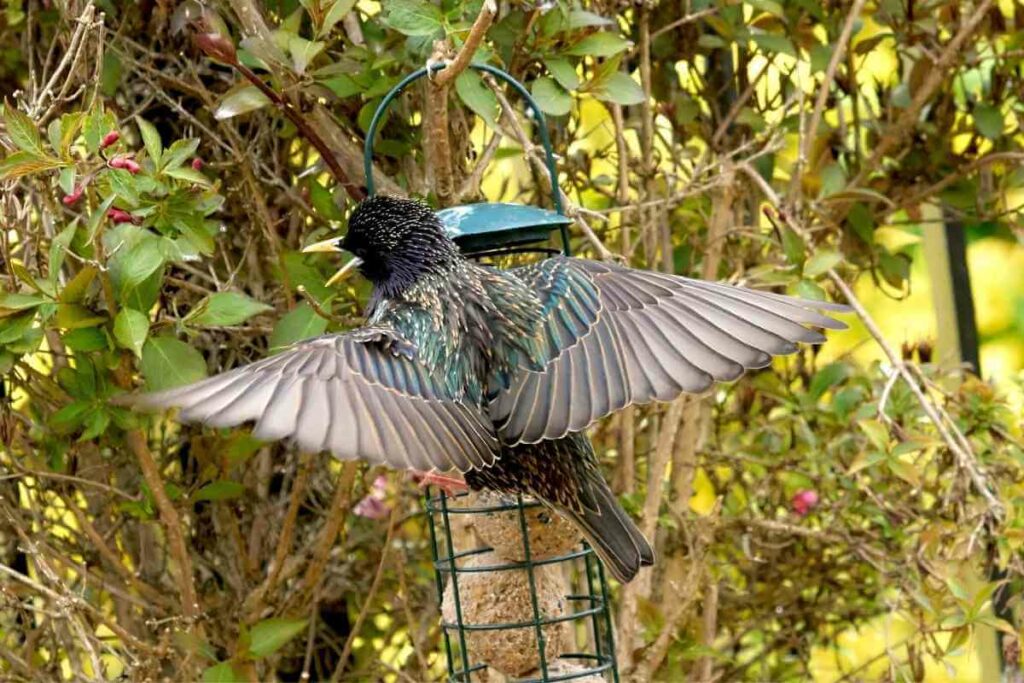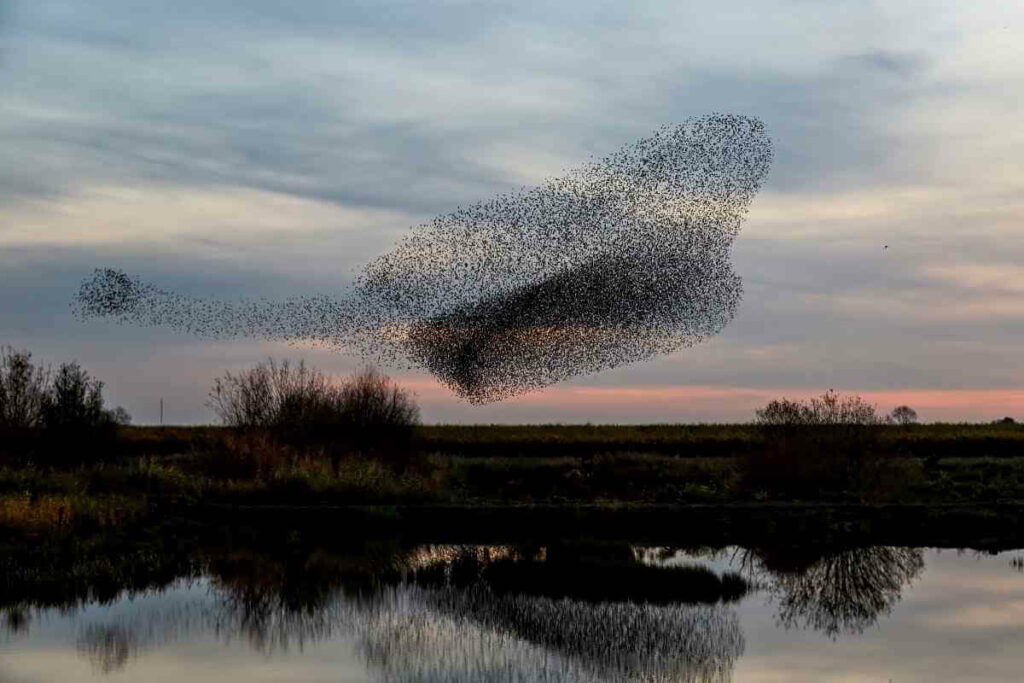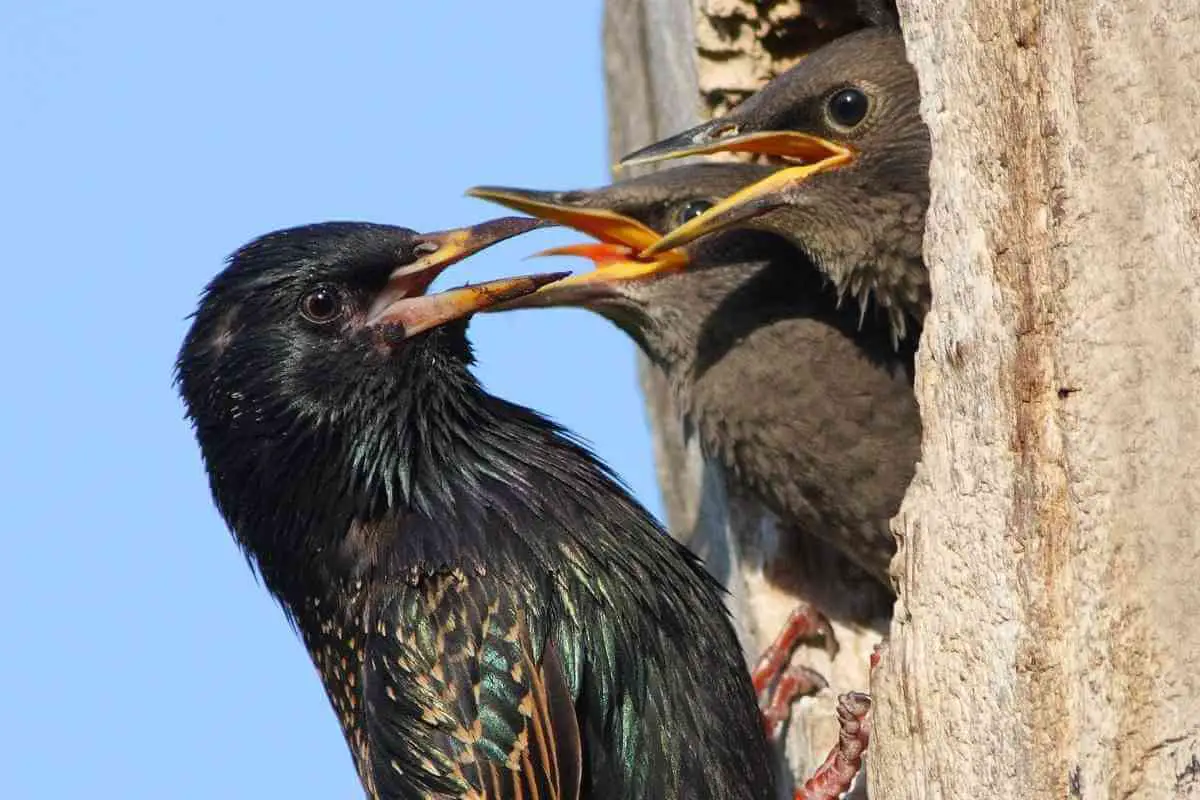Starlings are one of the most common garden birds in the world but for many people, they are considered to be a pest.
This is largely because of the damage that they will do to plants and this is common because of their nesting habits and large numbers.
If you’ve seen a lot of starlings in your yard, then you may be wondering, do starlings nest in the same place every year?
Starlings tend to remain in a colony and this colony will almost certainly return to the same breeding ground every year. In some cases, these birds may even return to a used nest that was left last breeding season.
What is most interesting, however, is that young starlings know exactly where they were born and will avoid these spots in the knowledge that they may end up mating with a parent.

Instead, young starlings, once mature enough, will fly away and join a new colony.
This colony will, of course, have its own breeding ground.
Do Starlings Migrate?
When you think of a starling, you’ll likely imagine this to be a resident bird, as you’ll typically see them all year round.
For the most part, this is true but there are some that will migrate.
This is more common in parts of Northern Europe, however and these birds will typically travel to the UK.
In the USA, starlings that are resident past the latitude of roughly New York City may migrate further south, even as far as Mexico.

This is to find suitable shelter and food before they return to their breeding ground when the temperature rises a little.
Normally, migrating starlings will arrive in their chosen destination around September, although most will settle during October.
Over the course of the winter, the starlings will gather in very large numbers, huddling together for the best cover.
There have been some reports of as many as one million starlings in a colony!
This is not uncommon and you may have heard of the murmuration which is an event that occurs just before the birds settle for the evening.
Flocks of starlings will put on a display in the sky, diving, swooping, and gliding which appears as one great mass of movement.

It’s quite the sight to behold!
As a Result: Once the winter is over, the starlings will begin to make their way back to their breeding ground which usually happens between February and March.
Returning To Nesting Grounds
When we talk about starlings, we say that they move in what is termed as a colony, although the nesting ground may be spread over a few hectares.
If you’re an avid bird watcher and pay special attention to one particular breeding ground, then you may well be watching the same adult starlings return year after year.
For many of these birds, returning to the exact same nest from the previous year is not uncommon.
However, it is highly unlikely that any of the birds you see will be the young from the previous year.
As we touched upon earlier, young starlings sense that they must join a new colony to avoid inbreeding and so, once mature, they fly off to discover a new ‘family.’
Do Starlings Mate For Life?
The starling courtship ritual is not unlike that of other birds.
Usually, the male will begin building a nest; gathering grass, straw, twigs, and other materials which he will fashion into a nest over the course of a few days.
As he does this, he will mimic other birds and sing, this is the first step in attracting a mate.
After this stage:
- he will then begin to line the nest with things like scented herbs, flowers, and leaves
- the more elaborate he is, the more likely he will be to attract a female.
Once a potential mate notices the efforts of the male, she will give him her full attention.

The male will also impress her with his glossy plumage and this is usually the deciding factor for the female. So, the pair will mate.
Afterwards, the female will join the male to finish building the nest.
Interestingly, one of the first jobs for the female is to remove everything the male put inside the nest and replace it with more practical materials such as:
- wool
- moss
- and feathers
Even before the eggs have hatched, the male may wander to find another new mate from within the same colony.
This isn’t always the case but is very common.
Surprisingly, in the mind of the male, this provides his current mate with help around the nest as well as increasing the chance of him producing a viable, strong brood.
The problem is that, mating twice within the same season is not likely to yield good results and the reproductive success of the male tends to less on his second attempt.
Moreover: There is a very realistic chance of conflicts between his two mates.
Conclusion
Starlings are fascinating birds that have a tendency to return to the same mating place every year.
Many birds will even return to the nest they built in the previous season.
However, when a starling is born, it will fly off to join a new colony to avoid mating with a parent or sibling.
